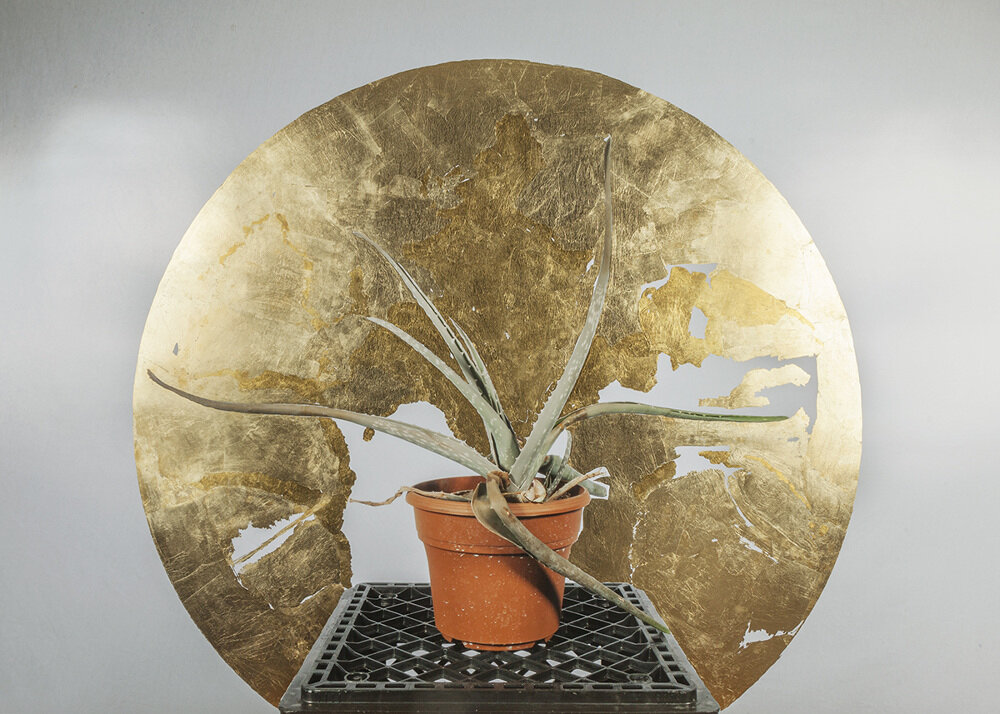26 Jan—26 Feb 2018
Whit Forrester—
Photosynthetic Transfigurations: A Work in Progress






In his 1922 work Siddartha, the German-born Nobel Prize-winning novelist, poet and painter Hermann Hesse wrote “Blue was blue, river was river, and if also in the blue and the river, in Siddhartha, the singular and divine lived hidden, so it was still that very divinity's way and purpose, to be here yellow, here blue, there sky, there forest, and here Siddhartha. The purpose and the essential properties were not somewhere behind the things, they were in them, in everything.” While the novel’s central theme is one of self-discovery, the book also delves into age-old questions about the interconnected relationship between human beings and the rest of the natural world, and how both human beings and the entirety of the natural world relate to the divine.
Whereas Hesse utilized the structure of a protagonist’s journey within the form of a traditional novel, in Photosynthetic Transfigurations: A Work in Progress, artist Whit Forrester uses plants as access points to highlight and explore this ongoing relationship and dialogue between us and the metaphysical. Forrester contends that we live in an age and a realm in which we access everything, including the divine and the metaphysical, through metaphorical templates, with a metaphor often serving as both a starting point and a set of operating instructions to explore or address a conundrum. We use symbols to program ourselves and our culture; in these works, Forrester employs plants to symbolize and mirror human beings and the human condition to elucidate the fact that we are not separate from nature but are undoubtedly part and parcel of its continuum. The mysterious and unknowable divine spark in plants is the same mysterious and unknowable divine spark that exists in us. Forrester compels us to consider the fact that we, like the entirety of the plant world as well as every innumerable star, are, as Joni Mitchell sang in Woodstock, “billion year old carbon.”
Forrester’s photographs are unique art objects; gold leaf is applied by hand to each individual work. Gold stands in for the divine because it is ineffable; in a way it is a form of light. Forrester’s gold circles and semicircles are reminiscent of the halos of numerous saints in medieval and Renaissance artworks, but they riff on those traditional representations of überholiness and instead depict the universality of the divine from a perspective of new materialism, queerness, and quantum feminism. In his practice, Forrester often explores ideas related to colonization and colonialism; in these photographs, gold represents both the literal colonial quest for gold but also the metaphorical desire to represent and connect with the divine and the supernatural. The Conquistadors and the colonizers wanted to become divine, to become light - if only they had known that we are in fact light already, though in a slightly different form.
Photosynthetic Transfigurations: A Work in Progress opens concurrently with New Monuments for a Better Tomorrow, Part I, a group exhibition curated by Jesse Firestone at The NARS Foundation in Brooklyn, New York, in which Forrester will be exhibiting a sister piece to the work shown at Quappi Projects.
Whit Forrester lives in Chicago, grew up in Louisville, KY and received a Bachelors from Oberlin College followed by a Masters in Fine Art from Columbia College. He has exhibited widely, in both national and international contexts, and has a range of aesthetic interests that include: practices of accumulation, manifestations of power, human discourses around the transcendent and the material relationship between self and world. Forrester’s attention to the natural world and its agential capacity for queer subjects unites these diverse investments and provides the means with which he interrogates the implications of queering as a spiritual practice which is ultimately connected to ideas of decolonization.
—John Brooks
